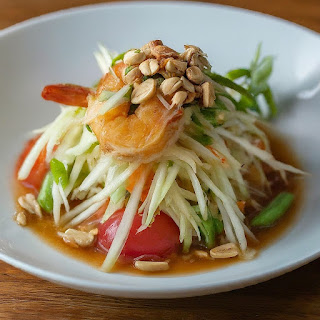 |
| Discover how overtourism harms communities through resource depletion, cultural erosion, and more. Explore sustainable solutions! |
Overtourism: The Strain on Local Resources, Cultural Erosion, Environmental Damage, Social Issues, and Commercialization
Subtitle: How excessive tourism can deplete natural resources and infrastructure
Table of Contents
- Introduction
- Key Takeaways
- What Is Overtourism?
- The Pros and Cons of Tourism
- Capturing the Moment through Food Photography
- Culinary Passport: Exploring the World’s Flavors
- Pull and Push Factors of Overtourism
- How Overtourism Affects the Environment
- Cultural Erosion and Social Impact
- Tips for Sustainable Travel
- The Best Time to Travel
- Things to Keep in Mind Before Traveling
- 5-Day Sustainable Travel Itinerary
- Testimonials: Local and Traveler Perspectives
- Frequently Asked Questions (FAQ)
- Conclusion
Introduction
We’ve all seen those picture-perfect travel photos—the bustling streets of Paris, the pristine beaches of Bali, the ancient temples of Angkor Wat. But behind these breathtaking snapshots, there’s a hidden cost: overtourism. While tourism can boost local economies, too much of a good thing can lead to environmental degradation, cultural erosion, and strained infrastructure.
Imagine this: You’ve planned your dream trip to a picturesque island only to find it overcrowded with tourists. The peaceful retreat you imagined now feels more like a theme park. This is the reality many destinations face due to overtourism. In this post, we'll explore the impact of excessive tourism, from its effects on local communities and ecosystems to how you can be a responsible traveler and help combat the problem.
Key Takeaways
- Overtourism can deplete local resources and damage cultural heritage.
- Responsible travel practices can minimize your footprint on the environment.
- Sustainable tourism is not just a trend—it’s the future of travel.
What Is Overtourism?
Overtourism occurs when a destination receives an overwhelming number of tourists, far beyond what its infrastructure and environment can handle. This surge of visitors often leads to overcrowding, resource depletion, and the commercialization of local culture.
When tourism exceeds the capacity of a location, it can disrupt daily life for residents, inflate prices, and degrade the quality of experiences for both visitors and locals. Overtourism often occurs in popular destinations, where the charm of a place can be overshadowed by large crowds and the commercialization of local culture.
Efforts to combat overtourism include promoting sustainable travel practices, encouraging off-peak visits, and supporting lesser-known destinations. By raising awareness and fostering responsible tourism, both travelers and communities can work towards a more balanced and enjoyable experience for everyone.
The Pros and Cons of Tourism
Tourism is a double-edged sword. On one hand, it can provide significant economic benefits to local communities by creating jobs and supporting local businesses. On the other hand, it can also lead to negative consequences like environmental degradation and the displacement of local residents.
Pros:
- Economic growth: Tourism provides jobs and supports local businesses.
- Cultural exchange: Travelers can learn about different cultures, fostering understanding and tolerance.
Cons:
- Environmental impact: Natural resources like water, land, and energy can be overused.
- Cultural erosion: Local traditions and customs may become commercialized for tourists.
Capturing the Moment through Food Photography
When visiting a new destination, food photography is an incredible way to connect with the culture. Imagine savoring street food in Bangkok or capturing the vibrant spices of a Moroccan souk. But while snapping photos, it’s important to remain mindful of the local customs and avoid disrupting the flow of daily life.
Culinary Passport: Exploring the World’s Flavors
Food is a universal language, and when we travel, one of the best ways to immerse ourselves in a new culture is through its cuisine. From Italian pasta dishes to sushi in Japan, every bite tells a story. However, overtourism can affect food production and lead to the commercialization of traditional dishes.
Food is one of the most exciting ways to experience a culture, and overtourism often leads to culinary commercialization. Traditional recipes might be altered or mass-produced to cater to the influx of tourists. That said, there’s nothing quite like savoring an authentic meal in a small, family-owned eatery. If you’re a foodie, look beyond the tourist hotspots and discover lesser-known dining experiences that reflect the true flavors of the region.
Indulge in unforgettable adventures. Experience the extraordinary today. Plan your trip today.
Pull and Push Factors of Overtourism
The push factors of overtourism include aggressive marketing by travel companies, cheap flights, and the glamorization of travel on social media. Meanwhile, the pull factors are the irresistible lure of famous destinations, often fueled by Instagram photos or travel blogs.
How Overtourism Affects the Environment
The environmental consequences of overtourism are severe. In places like Thailand’s Maya Bay and the Philippines’ Boracay, popular beaches have had to close temporarily due to the ecological damage caused by too many visitors. The depletion of natural resources, such as fresh water, and the increase in waste are significant issues.
Escape the ordinary. Create unforgettable memories. Discover your next hidden gems now.
Cultural Erosion and Social Impact
When tourists flood into a location, local culture can be watered down or commercialized to cater to visitors. Authentic traditions and crafts are often replaced by mass-produced souvenirs. In places like Venice and Barcelona, overtourism has also led to the displacement of local residents due to rising housing costs.
Tips for Sustainable Travel
- Travel during the off-season: This reduces the pressure on local resources.
- Support local businesses: Stay in locally-owned accommodations and eat at family-run restaurants.
- Limit your footprint: Use eco-friendly transportation, bring reusable water bottles, and minimize waste.
The Best Time to Travel
The best time to visit popular destinations is often during the shoulder seasons, when the weather is still pleasant, but the crowds are smaller. For instance, visiting the Greek islands in September rather than July can give you a more authentic experience without the throngs of tourists.
To minimize your impact and maximize your enjoyment, consider traveling during the off-season or shoulder season. This is the time when the weather is still pleasant, but the crowds have thinned. For instance, visiting Santorini in September or Peru in May offers a quieter experience while still enjoying the beauty and culture of these places.
Things to Keep in Mind Before Traveling
- Research your destination thoroughly.
- Respect local cultures and traditions.
- Avoid overcrowded spots and explore lesser-known gems.
When planning your next trip, remember these key points:
- Research the destination’s capacity for tourism: Some places have visitor caps or restrictions to prevent overcrowding.
- Pack smart: Opt for reusable items to avoid creating unnecessary waste.
- Support local businesses: Shop at local markets and eat at local restaurants rather than big tourist chains.
Elevate your travel experience. Explore diverse landscapes and rich culture. Get special discounts.
5-Day Sustainable Travel Itinerary
Day 1: Arrival and Cultural Exploration
- Visit a local museum or cultural center.
- Dine at a family-owned restaurant.
Day 2: Nature and Outdoor Activities
- Hike a nearby trail or visit a national park.
- Opt for eco-friendly tours.
Day 3: Discover Hidden Gems
- Explore lesser-known areas outside of the city center.
Day 4: Learn from Locals
- Take a traditional cooking class or handicraft workshop.
Day 5: Relaxation and Reflection
- Enjoy a quiet beach or countryside retreat.
Testimonials: Local and Traveler Perspectives
Maria (Local Resident):
"Tourism has been a blessing for our town, but at times, it feels like we are losing our identity. It's crucial for visitors to respect our traditions and not just treat us like a tourist attraction."
John (Traveler):
"I love traveling, but after seeing the impact of overtourism firsthand, I’ve started to be more mindful about when and where I go. It's important to leave a place better than you found it."
Frequently Asked Questions (FAQ)
Q: What are the causes of overtourism?
A: Overtourism is often driven by cheap flights, social media influence, and aggressive marketing by travel companies.
Q: How can I travel more sustainably?
A: You can travel sustainably by visiting off-the-beaten-path destinations, supporting local businesses, and minimizing your environmental impact.
Q: What are some signs that a destination is suffering from overtourism?
A: Common signs include overcrowded attractions, long wait times, environmental degradation, and commercialization of local culture.
Q: How can I contribute to sustainable travel?
A: Consider traveling during off-peak seasons, visiting lesser-known destinations, supporting eco-friendly businesses, and being mindful of your waste and energy usage.
Tips for Sustainable Travel
If you’re committed to responsible tourism, here are a few tips:
- Travel off-season: It’s better for the environment and helps local economies thrive year-round.
- Respect the local culture: Learn about customs before you arrive and behave respectfully.
- Choose eco-friendly accommodations: Look for hotels and stays that prioritize sustainability, whether through water conservation, renewable energy, or other green initiatives.
Elevate your travel experience. Explore diverse landscapes and rich culture. Get special discounts.
Conclusion
Overtourism is a growing issue, but it’s not an unsolvable problem. As travelers, we have the power to make more sustainable choices, respect local cultures, and reduce our environmental impact. By being more mindful of when and where we travel, we can ensure that the places we love remain beautiful for generations to come.
Remember that the global travel industry is booming, but with it comes the responsibility to travel more consciously. Overtourism may seem like an inevitable byproduct of our wanderlust, but with small, mindful changes, we can make a big difference. By supporting sustainable travel practices, respecting local communities, and choosing destinations with care, we can enjoy the wonders of the world without leaving a negative impact behind.
Share, Subscribe, and Engage
Have you experienced overtourism on your travels? Share your thoughts and tips in the comments below! Don’t forget to subscribe for more travel insights, and spread the word by sharing this article with fellow travelers. Let's create a more sustainable future for travel together.
overtourism, sustainable travel, cultural erosion, environmental impact, responsible tourism, travel tips, hidden gems, eco-friendly travel
Have you encountered overtourism on your travels? What steps did you take to make your trip more sustainable? Share your experiences in the comments below! Don’t forget to subscribe for more travel insights, and pass this article along to your fellow travelers.
YOU MIGHT ALSO BE INTRESTED IN:
Taking a Local Cooking Class on Your Travels Grubbin' Around the Globe
Which Reigns Supreme: Italian or French Cuisine?
The best budget travel destinations for Backpacker Around the Globe
Gorilla Trekking in Rwanda Encounter with Gentle Giants
#Overtourism #SustainableTravel #EcoFriendlyTourism #CulturalPreservation #HiddenGems #TravelResponsibly #SustainableTourism #EnvironmentalConservation










.jpg)